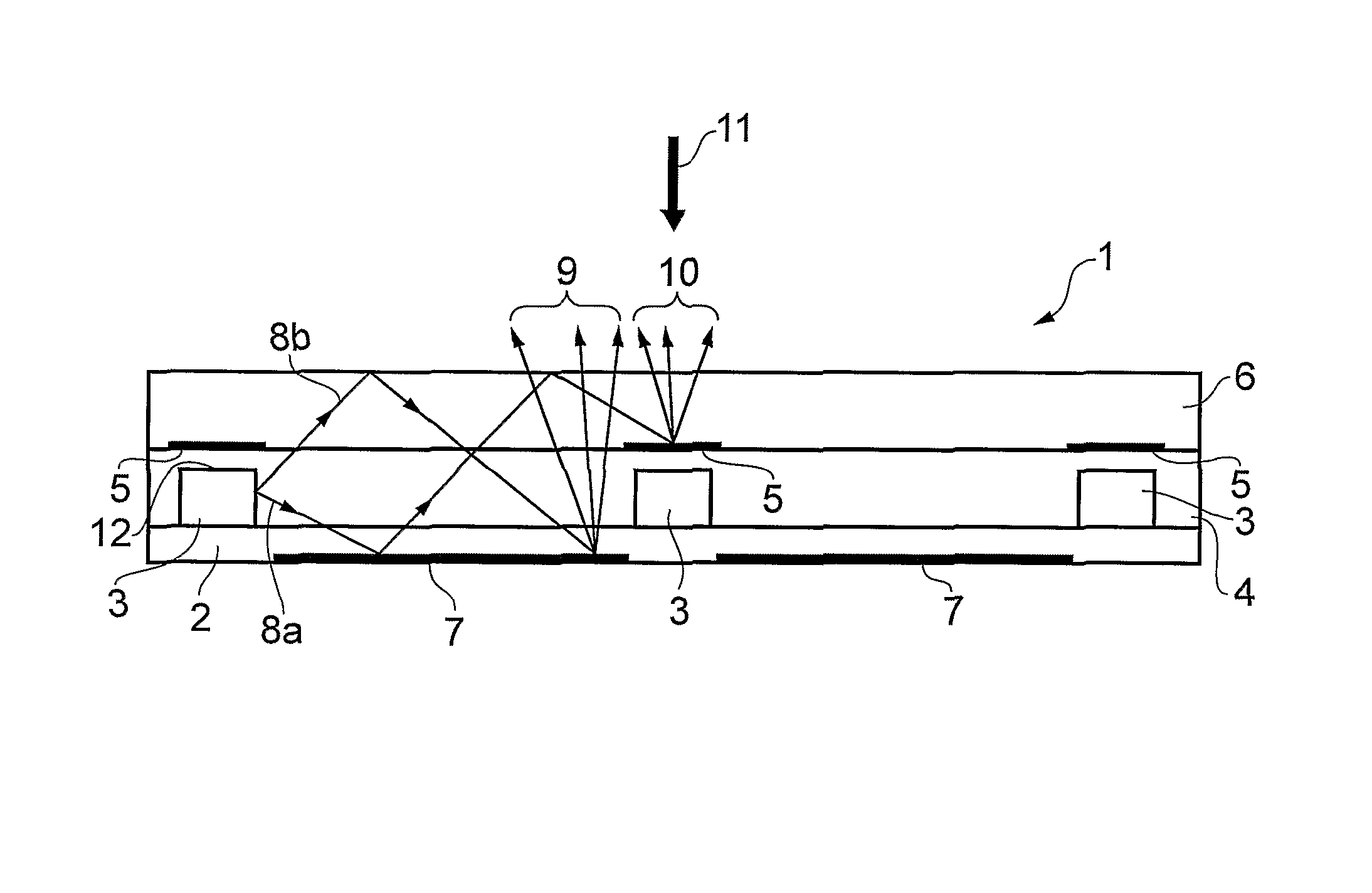Light guides
a technology of light guide and guide rod, which is applied in the direction of optics, lighting and heating apparatus, instruments, etc., can solve the problems of increasing the complexity of the production process of these devices, the disadvantage of creating dark spots above the light source, and the components are susceptible to mechanical damage, etc., to achieve reduced/no dark spots, reduce power requirements, and lighten the structure
- Summary
- Abstract
- Description
- Claims
- Application Information
AI Technical Summary
Benefits of technology
Problems solved by technology
Method used
Image
Examples
example 1
[0052]A device in accordance with the invention was constructed as follows. A 0.125 mm thick sheet of transparent polyester was used as a base substrate. A scattering structure comprising white lines of ink was printed onto the underside of the polyester film. The ink used was a white acrylic based, UV curing polymer screen printable ink which is commercially available. On the opposite (or top) side of the polyester film was printed conducting tracks (silver particle loaded conducting epoxy) and conducting adhesive in order to mount a number of LEDs (Stanley Tw1145ls-tr) onto the substrate and provide suitable electrical connections onto the conducting ink tracks. A cavity, about 0.7 mm deep was formed around the perimeter of the base substrate using a cavity layer structure. The cavity was then filled with UV curing transparent polymer (Dymax 4-20688), thus forming a first light guide layer. The second light guide layer was formed by placing on top of the first light guide layer a ...
PUM
| Property | Measurement | Unit |
|---|---|---|
| thick | aaaaa | aaaaa |
| thick | aaaaa | aaaaa |
| width | aaaaa | aaaaa |
Abstract
Description
Claims
Application Information
 Login to View More
Login to View More - R&D
- Intellectual Property
- Life Sciences
- Materials
- Tech Scout
- Unparalleled Data Quality
- Higher Quality Content
- 60% Fewer Hallucinations
Browse by: Latest US Patents, China's latest patents, Technical Efficacy Thesaurus, Application Domain, Technology Topic, Popular Technical Reports.
© 2025 PatSnap. All rights reserved.Legal|Privacy policy|Modern Slavery Act Transparency Statement|Sitemap|About US| Contact US: help@patsnap.com


